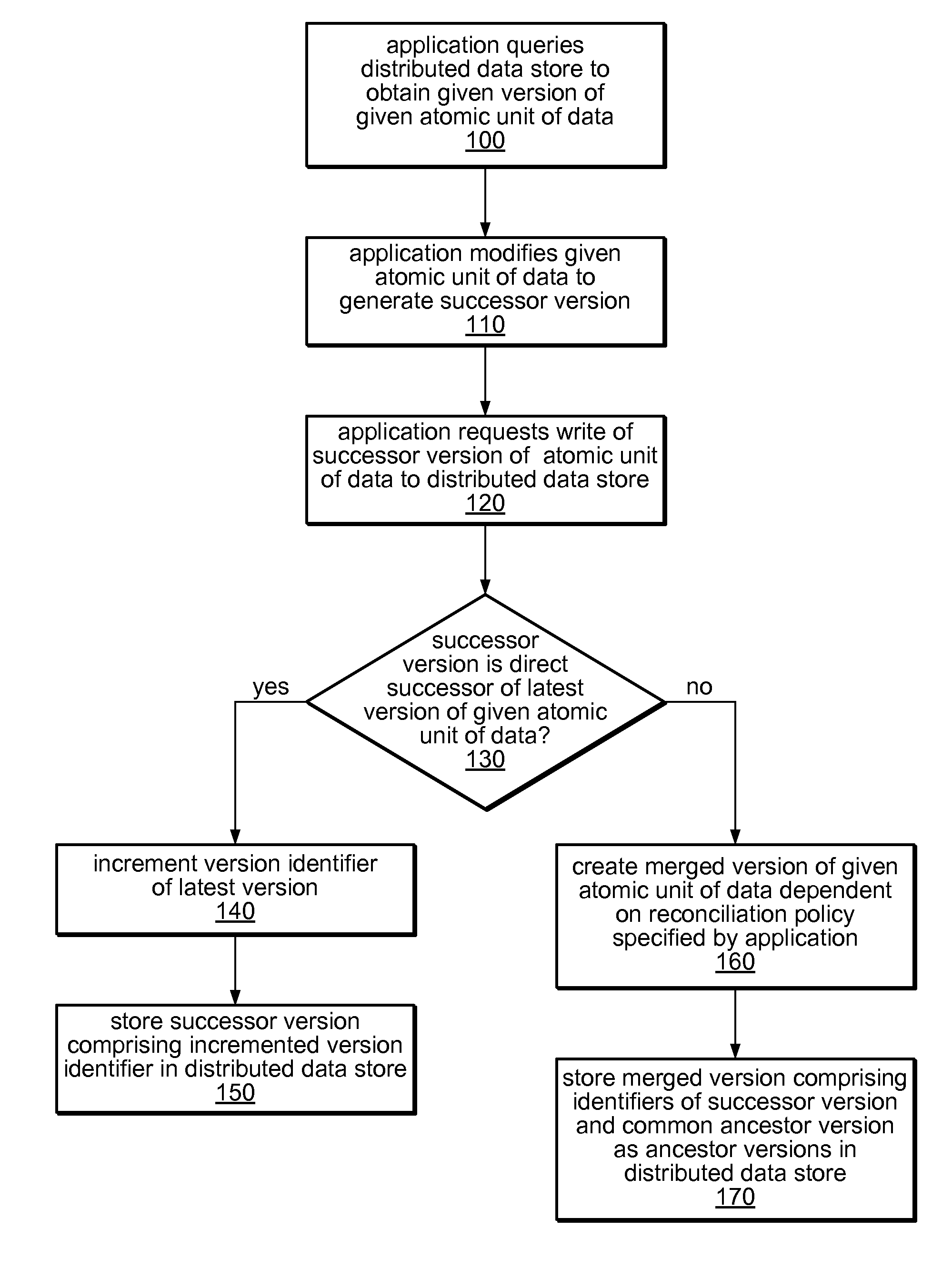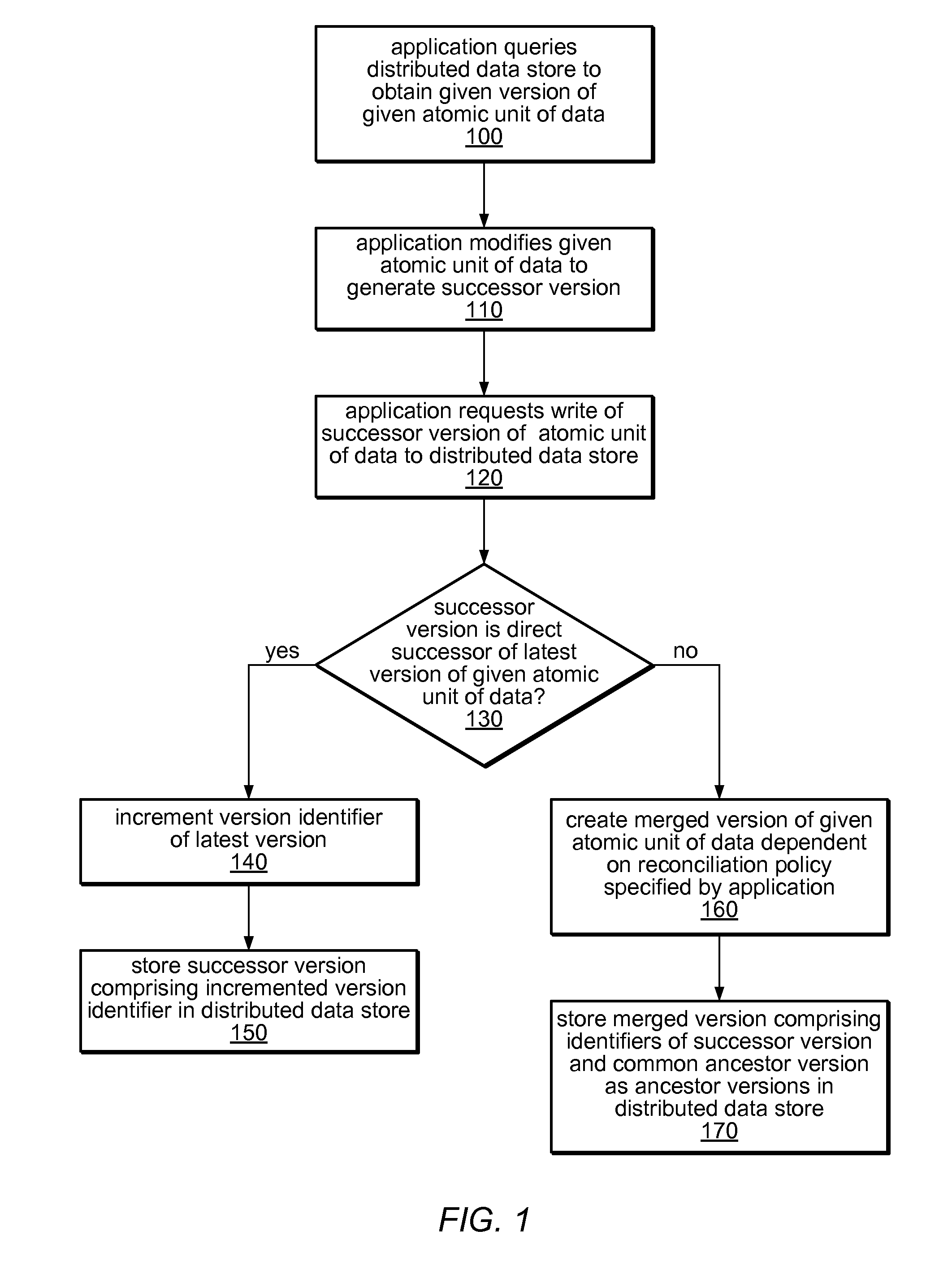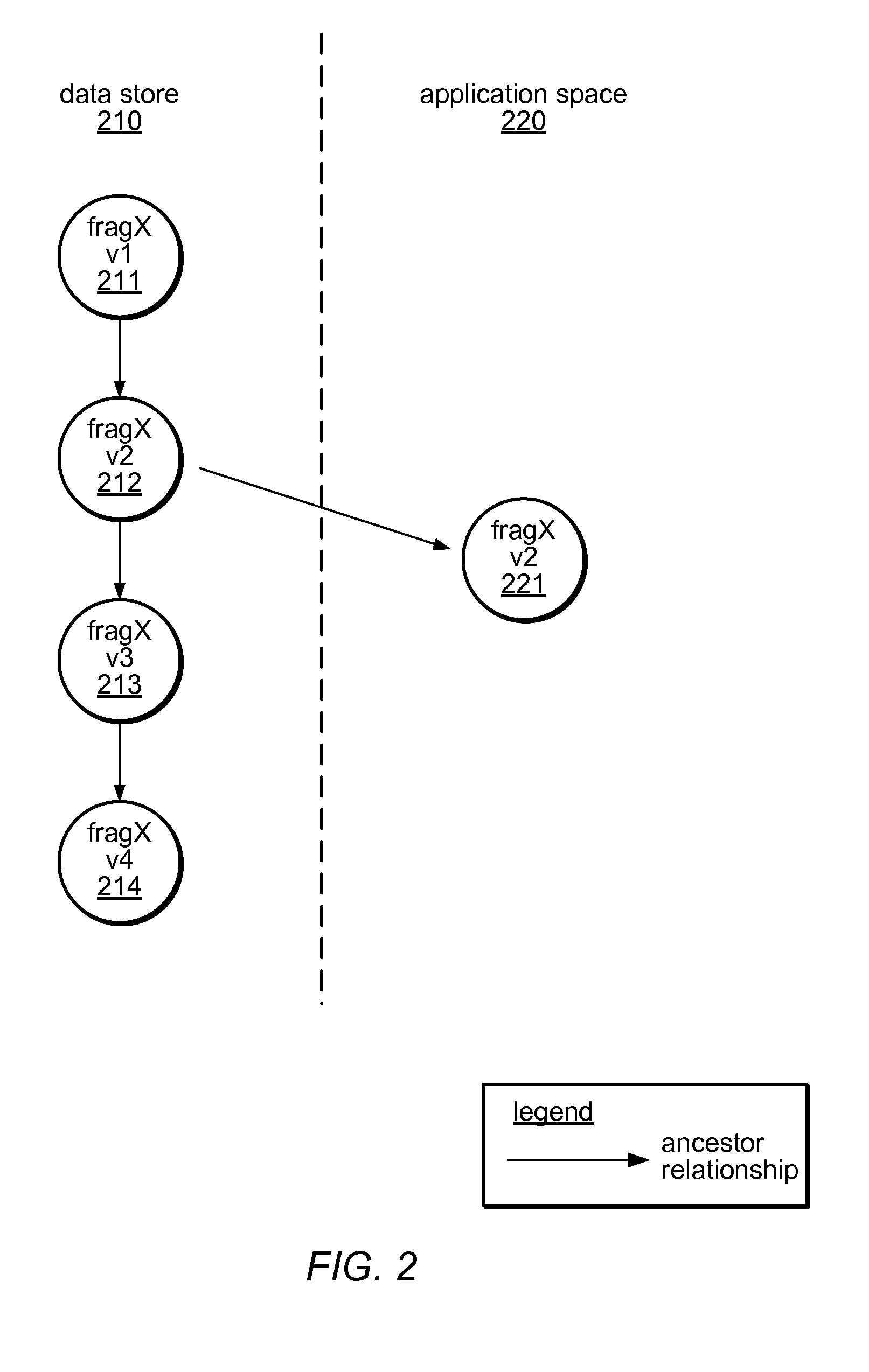System and method for versioning data in a distributed data store
a technology of distributed data and versioning, applied in the direction of digital data processing details, database distribution/replication, instruments, etc., can solve the problems of not being suitable for a given client application or use model, and the management of different versions of stored data that are suitable for use in small-scale and/or single-node systems,
- Summary
- Abstract
- Description
- Claims
- Application Information
AI Technical Summary
Problems solved by technology
Method used
Image
Examples
Embodiment Construction
[0026]A system and methods for versioning atomic units of data in a distributed data storage system are disclosed. The methods may be applied, for example, to versioning of XML fragments of documents, or other individual data elements, maintained by a distributed database system. While many examples described herein involve versioning of XML fragments in a distributed database, it will be understood by those of ordinary skill in the art that the methods may be applied to data of other types or formats, and / or to other types and configurations of distributed storage systems, in various embodiments. Internally, some systems may use a relational data model representation, however, the exact data representation is irrelevant. Rather, the system and methods may be thought of as operating on atomic units of data, be they XML or relational. In the examples described herein, such data units may be referred to as fragments or XML fragments to reflect a client application's point of view.
[002...
PUM
 Login to View More
Login to View More Abstract
Description
Claims
Application Information
 Login to View More
Login to View More - R&D
- Intellectual Property
- Life Sciences
- Materials
- Tech Scout
- Unparalleled Data Quality
- Higher Quality Content
- 60% Fewer Hallucinations
Browse by: Latest US Patents, China's latest patents, Technical Efficacy Thesaurus, Application Domain, Technology Topic, Popular Technical Reports.
© 2025 PatSnap. All rights reserved.Legal|Privacy policy|Modern Slavery Act Transparency Statement|Sitemap|About US| Contact US: help@patsnap.com



